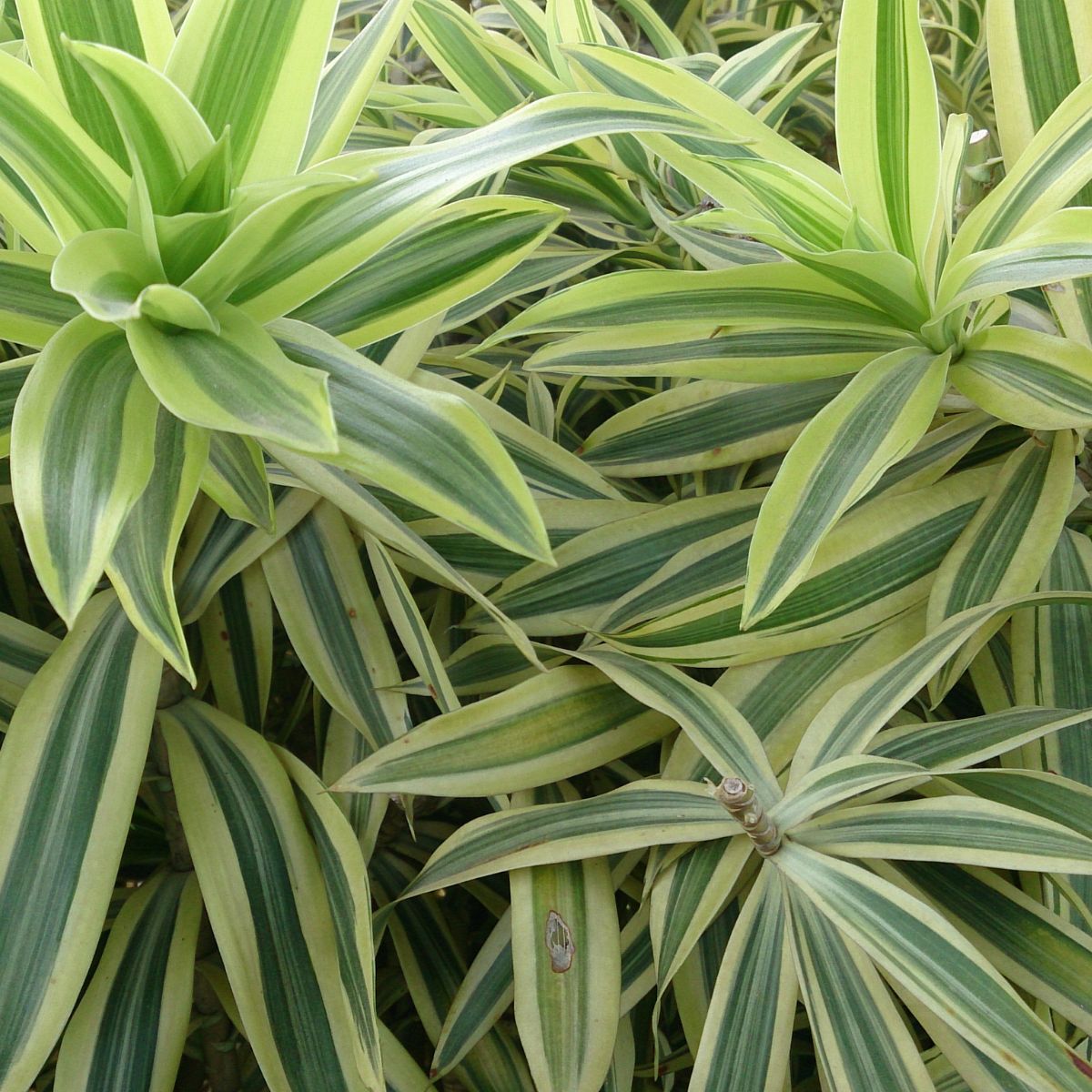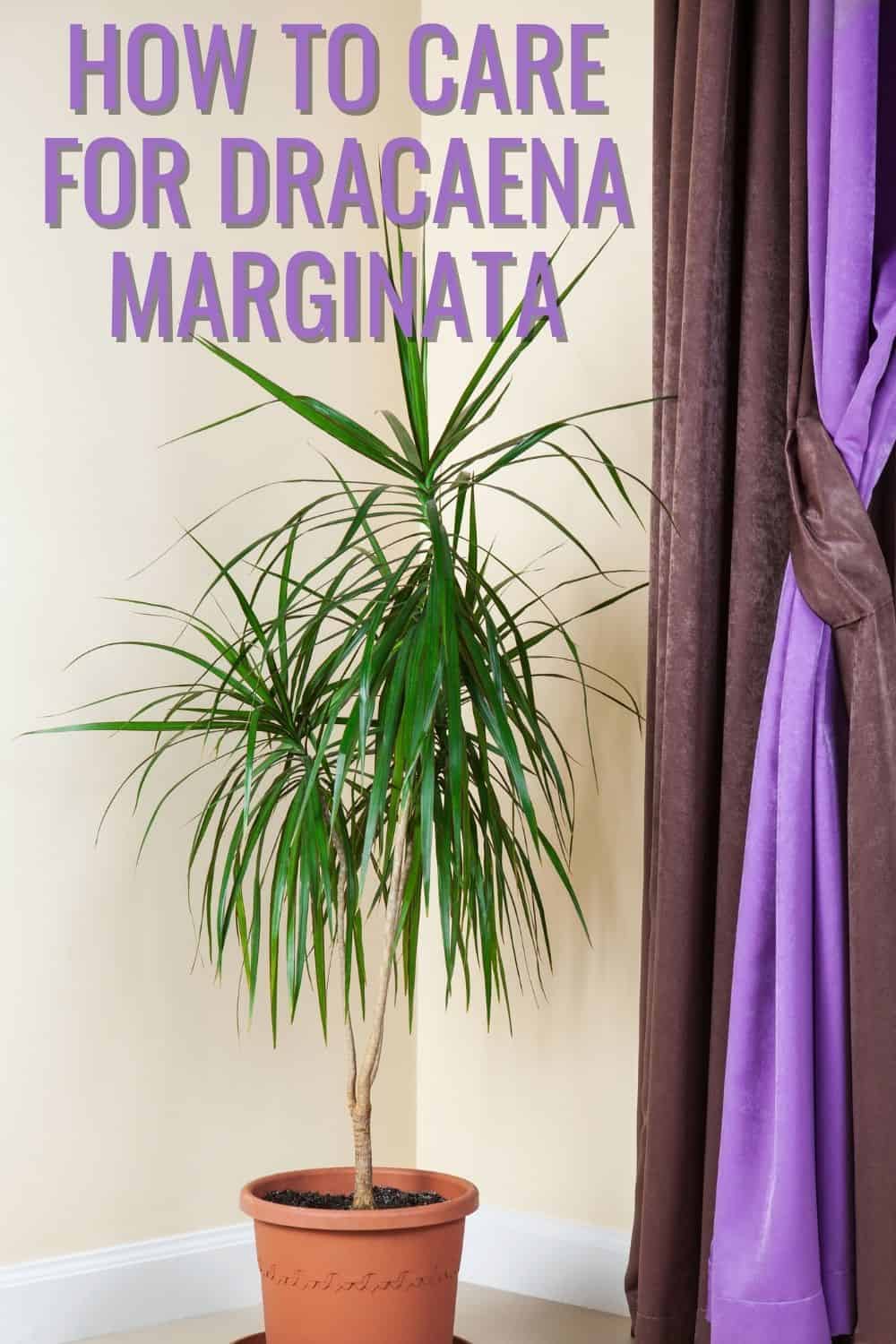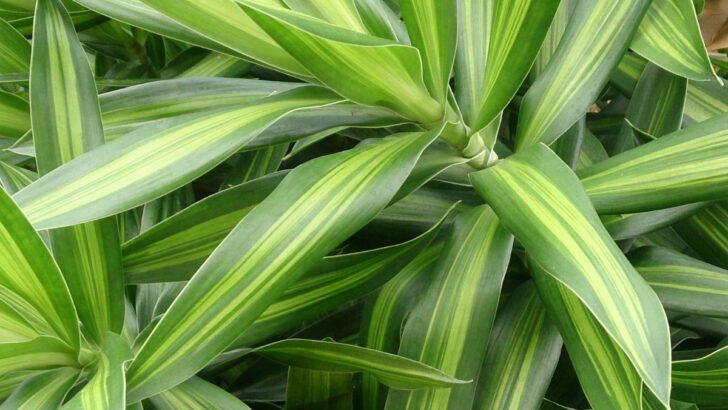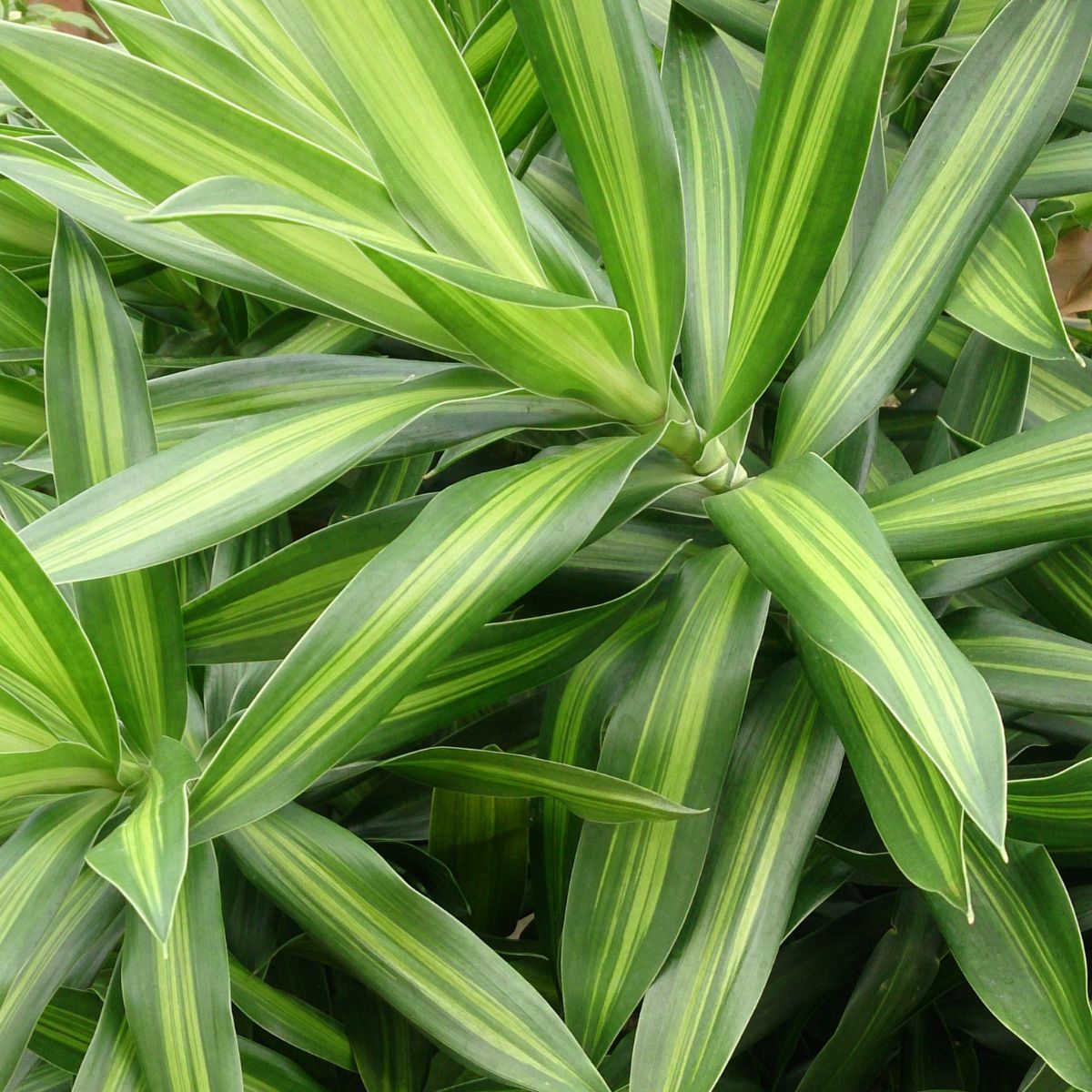Also known as the Madagascar dragon tree, ted-edge dracaena, Malaysian dracaena, or song of India, the dracaena marginata is a popular houseplant that makes a colorful addition to any room’s decor with its narrow green or variegated leaves. Let’s look at how to care for dracaena marginata.
When well-maintained, this tree can grow up to 15 feet and higher. But with proper pruning, the height of the Dracaena plant can be adjusted to shorter and fuller versions.
Dracaena Marginata Plant Care Tips
There are basic steps to promote plant health and sustain growth. How to care for Dracaena marginata plants is no different. The palm tree-like plant has its own special needs to help keep it healthy, whether planted outside or as an indoor potted plant. Several of the basic areas to consider for healthy Dracaenas include:
- Indoor versus outdoor plants
- Light requirements
- Water requirements
- Soil type
- Fertilizer usage
- Temperature
How Do You Care for a Dracaena Marginata Indoors versus Outdoor?
Here are a few things you need to know about dracaena marginata care.
Light requirements
The dragon tree is popular as an indoor plant because it requires minimal maintenance and is a slow grower, averaging about 18 inches yearly. A popular indoor plant, the Dracaena prefers bright filtered sunlight, so make sure to keep it in a room that receives natural light. And while it prefers a bright spot in your living room, the dragon tree plant can do quite well in low-light conditions.
The plant does not thrive in direct or full sunlight because the ultraviolet rays will burn or scorch the leaves.
To help keep their environment plant-friendly, do not place indoor dracaena plants in areas where they will be exposed to cold drafts or under vents that can dry out their leaves.
Planted outdoors in mobile containers, the dragon plant can thrive in a partially shaded location where it will receive indirect sunlight. Planting in containers allows the plant to be moved, as needed, to receive adequate sunlight, and to be moved indoors during cold weather. Dracaenas require warm environments.
Water requirements
Watering requirements for the Dracaena marginata are the same for indoor and outdoor plants. Dracaenas prefer slightly moist to slightly dry soil (not bone-dry) and require watering at least once a week. The plant is not tolerant of soggy soil.
Excess water can leave the soil overly saturated, resulting in root rot or fungus. Whether inside or out, the plant requires adequate watering and good drainage (make sure you plant it in a container with good drainage holes).
Use non-fluoridated water (distilled water is best) for Dracaena marginata plants. Tap water contains fluoride, which has an adverse effect on the plant and results in dry brown leaves.
Soil and Fertilizer
Along with well-draining soil, dragon trees do well in airy soil, such as nutrient-rich loam combined with peat moss to regulate the pH level and vermiculite, perlite, or pumice to support good drainage. Fertilizing Dracaena plants is usually done one or two times annually during the spring and summer when they are most active.
Temperature
Dracaenas are high-humidity tolerant plants. The optimum temperature to maintain the plant is between 65 and 90 degrees Fahrenheit. If the plants are subjected to temperatures below 65 degrees for even a short period, it will cause damage.
The USDA heartiness zones best suited to these plants are 10 through 12. Although these two zones offer the warmest temperatures, they also experience temperatures below 65 degrees during the winter. For those who prefer to have Dracaenas outdoors, the plants should be placed in pots so they can be brought in during the colder months.

How To Propagate Dracaena Marginata
During the pruning season, cuttings can be used to propagate new plants. The cut stems can be started in one of two ways. Once the stems are pruned, place them in a pot filled with nutrient-rich soil and perlite or another substance that promotes drainage.
A second option is to place the stems in non-fluoridated water and set them in an area receiving adequate sunlight. Once the stems develop roots, the stems can be transferred to a container for continued growth.
Dragon Tree pests
Dracaena marginatas are susceptible to several plant diseases and garden pests, such as spider mites, fungus gnats, mealybugs, aphids, scale insects, and thrips.
Spider mites attack during the summer. They lay eggs on the undersides of the leaves. When they hatch, they drain the leaves of their juices. Brown tips and yellow leaves are signs the plant is infected.
Mealybugs are group feeders that remove the sap from the bottom of the plant’s leaves and stems.
Dracaena plants are prone to attracting scale. The tiny pests attach themselves to one spot and feed by removing vital liquids from the plant. The removal weakens the plant and stunts its growth.
Thrips come about due to inadequate water leaving the leaves weak. The bugs attack the weakened leaves, sucking out any available juice.
To help keep Dracaena plants pest-free, several products and methods can be used for removal and protection.
- use water to spray away pests that have grouped together on stems and/or leaves
- use other predators that feed on your specific pests
- remove infested leaves
- apply insecticidal soap, neem oil, or miticides
How to Prune Your Dracaena Marginata
The expected growth pattern for the Dracaena is for the plant to grow on a single trunk or stem. When left unpruned, this results in tall plants. Pruning regulates the height of the tree, which is important for indoor plants. The plant will also generate a new branch at the cut/pruned spot. This results in a multi-branched and full-bodied plant with abundant leaves.
Whether kept indoors or outdoors, pruning Dracaena plants is easy and takes place during the spring and summer when the plant is in growing mode. During the fall and winter, the plant is dormant, and pruning can put the plant at risk and cause damage.
FAQs About The Madagascar Dragon Tree Plant
Is the Dracaena marginata tree poisonous?
For pet owners, the answer to whether Dracaena marginate is toxic to cats and dogs is yes. The plant contains saponins, a toxic compound found in plants. Saponins are used in products such as detergents.
If dogs or cats eat the Dracaena leaves, there are several symptoms. These include excessive drooling, dilated pupils, stomach aches, rapid heartbeat, vomiting, swelling of the face, diarrhea, lack of energy, depression, and loss of appetite. If ingested, contact a veterinarian or the pet poison helpline immediately.
What are the different types of dragon trees?
Lucky bamboo and corn plants are just two of the estimated 40 species of Dracaena.
- Lucky bamboo is associated with Feng Shui decor (see more indoor plants for Feng Shui) and may be grown in water.
- Corn plants stand out due to their long arching leaves featuring yellow stripes.
Several additional types of Dracaenas marginata include:
- Deremensis – several cultivars of this species include Warneckii, Janet Craig, and Lemon Lime.
- Gold Dust – this variety is distinguishable by its shorter stature and leaves with yellow stippling.
- Madagascar Dragon Tree – this plant features reddish tinges with purple.
- Ribbon Plant – room-wise, the Ribbon plant takes up around five inches.
- Song of India or Jamaica – colorful, the Song of Jamaica features a combination of dark and light green, while the Song of India has leaves trimmed in white or cream.
What colors does the Malaysian dracaena come in?
There are three standard color codes for Dracaena marginata varieties – DM Tricolor, DM Colorama, and DM Bicolor.
Dracaenas with the DM tricolor feature green leaves highlighted with red rims and ivory stripes down the center. DM Colorama features variegated green and white striped leaves. DM bicolor has both red and green stripes.
Whether grown outdoors in containers or inside as a decorative accessory or as a natural air purifier, dracaena marginata can be part of a home’s interior or landscape for many years.




